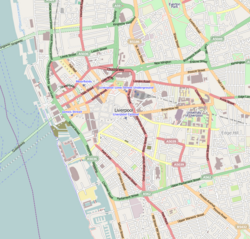| State Insurance Building | |
|---|---|
 State Insurance Building | |
| Location | 14 Dale Street, Liverpool, Merseyside, England |
| Coordinates | 53°24′26″N2°59′24″W / 53.40726°N 2.99013°W |
| OS grid reference | SJ 343 905 |
| Built | 1906 |
| Architect | Walter Aubrey Thomas |
| Architectural style | Gothic Revival |
Listed Building – Grade II | |
| Designated | 14 March 1975 |
| Reference no. | 1068277 |
The State Insurance Building is at 14 Dale Street, Liverpool, Merseyside, England. Half of the building was destroyed by bombing in the Second World War. Both its external architecture and its internal decoration are elaborate.




